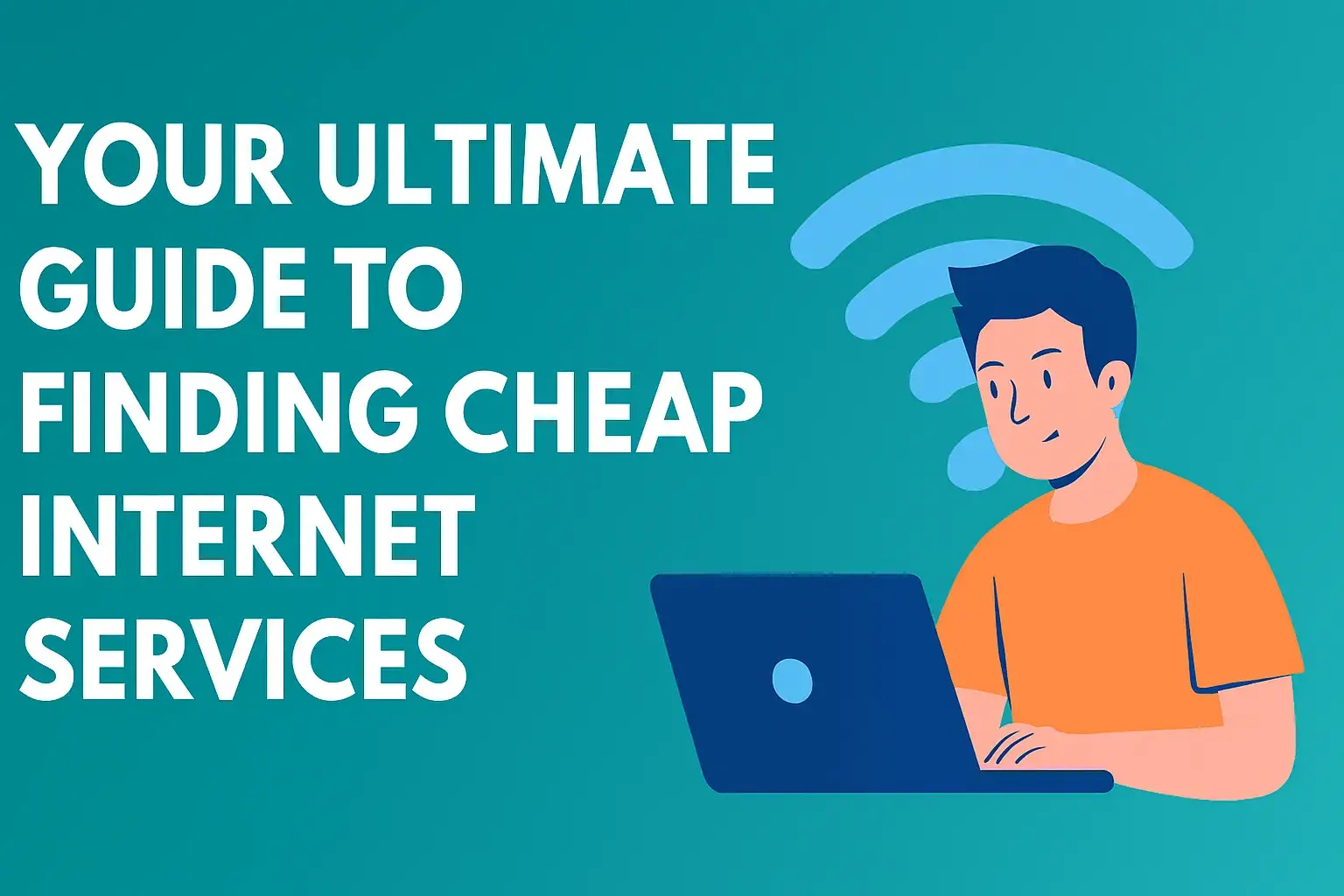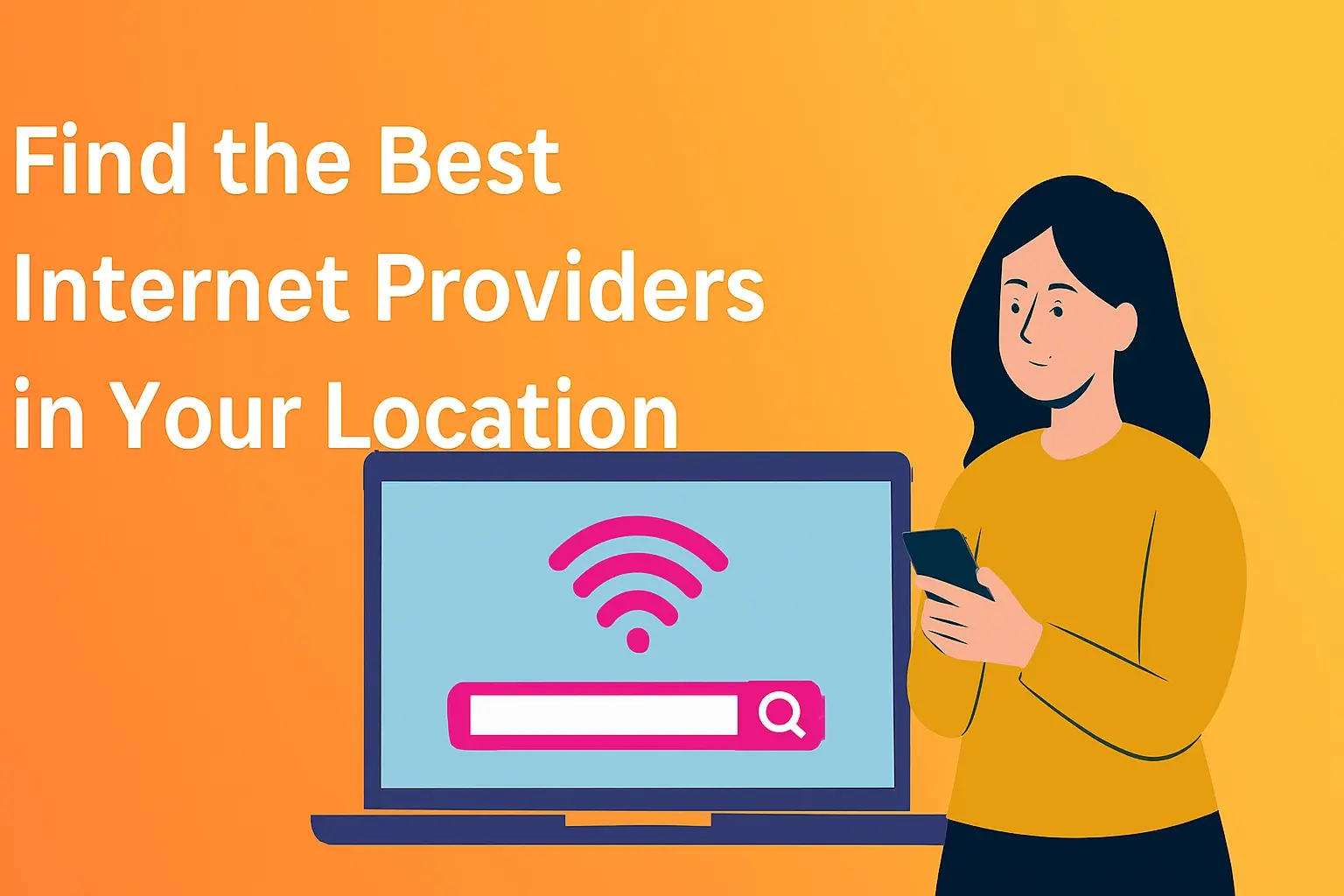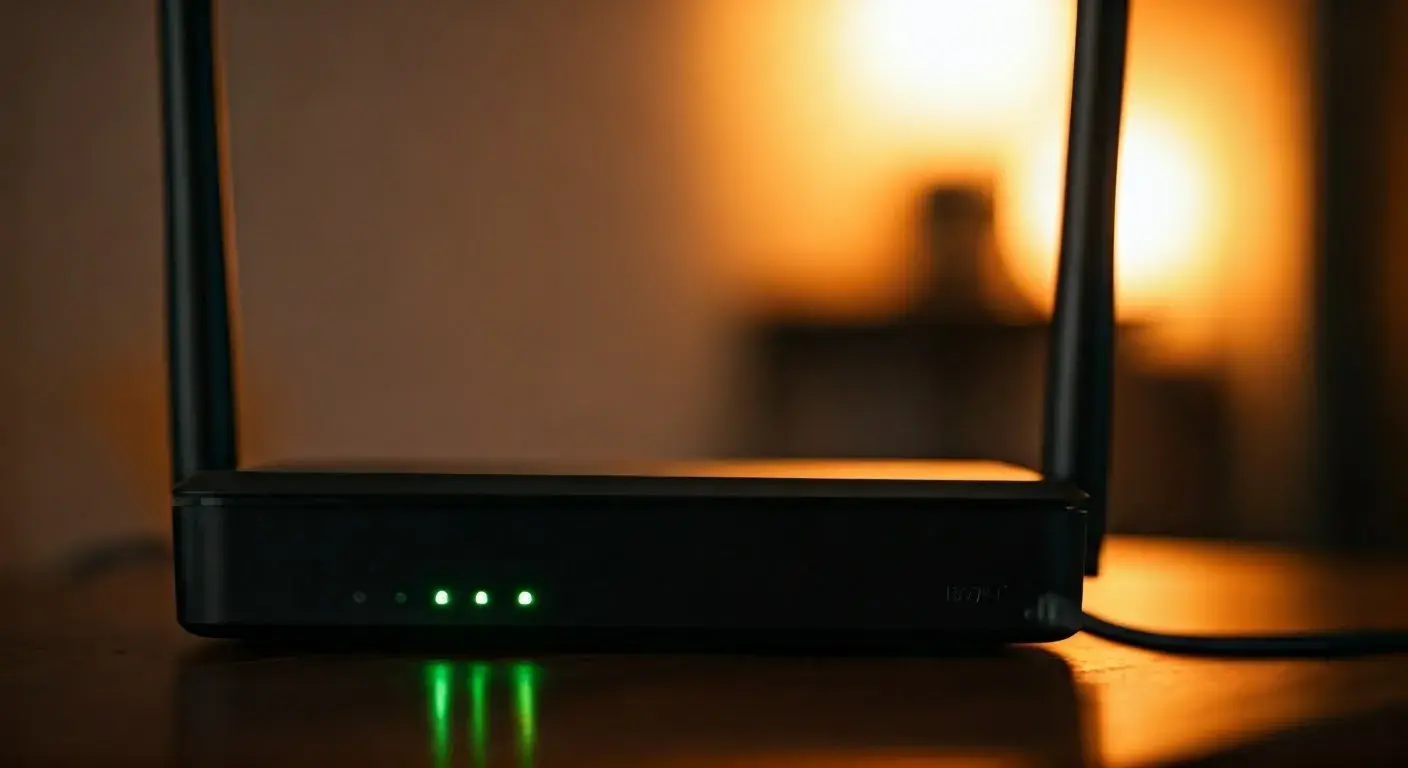Your Ultimate Guide to Finding Cheap Internet Services

In today's connected world, a reliable internet connection isn't a luxury—it's a necessity. From remote work and online education to streaming your favorite shows and staying in touch with loved ones, we depend on the internet for nearly everything. But this essential service often comes with a hefty price tag. The good news? You don't have to break the bank to get online.
Finding affordable internet is entirely possible if you know where to look and what to ask for. This guide will walk you through everything you need to know about securing a high-quality, low-cost internet plan. We'll explore the top budget-friendly providers, explain the different types of connections, and share insider tips to help you slash your monthly bill.
Top Picks for Cheap Internet Providers in the USA
While availability varies greatly by location, several providers consistently offer excellent value across the country. Here’s a rundown of the best options for budget-conscious consumers.
1. Xfinity from Comcast
Xfinity is one of the most widely available cable internet providers in the nation, known for its extensive range of plans that cater to different needs and budgets.
Why it's a great choice: Xfinity's entry-level plans are often some of the most affordable on the market. Their "Connect" and "Connect More" plans offer decent speeds (typically 75-200 Mbps) for a very competitive price, especially during the first 12-24 months of service.
Best for: Small households, students, and anyone whose online activities primarily involve browsing, emailing, and standard-definition streaming.
Things to watch out for:
Promotional Pricing: The attractive low price is usually a promotional rate. After the initial term (typically one or two years), the price can increase significantly. Always read the fine print and mark your calendar to renegotiate before the term ends.
Data Caps: Many of Xfinity's cheaper plans come with a 1.2 Terabyte (TB) data cap. While this is a generous amount for most users, heavy streamers, online gamers, and large families might need to monitor their usage or opt for an unlimited data plan for an additional fee.
Equipment Fees: You'll typically be charged a monthly fee to rent their xFi Gateway (modem/router combo). You can often save money in the long run by purchasing your own compatible modem and router.
2. Spectrum (Charter Communications)
Spectrum is another major cable provider that stands out for its straightforward pricing and policies. They are a fantastic option in areas where they operate.
Why it's a great choice: Spectrum's biggest selling point is simplicity. They offer standardized plans with no data caps and typically include a modem rental in the price. Their starting speeds are also very generous, usually beginning at 300 Mbps.
Best for: Families, streamers, and gamers who don't want to worry about data overage fees.
Things to watch out for:
Price Hikes: Like Xfinity, Spectrum's introductory prices are for the first 12 months. Expect a price increase after the first year.
Wi-Fi Router Fee: While the modem is often free, there's a small monthly charge for using their Wi-Fi router. Buying your own router is a simple way to eliminate this fee.
3. AT&T Internet
AT&T offers both traditional DSL-based internet and a cutting-edge fiber-optic service. If you're lucky enough to be in an area with AT&T Fiber, it's one of the best value propositions in the industry.
Why it's a great choice: AT&T Fiber plans offer symmetrical speeds, meaning your upload speeds are just as fast as your download speeds. This is a game-changer for video conferencing, uploading large files, and online gaming. Their entry-level fiber plan (often 300 Mbps) is competitively priced and comes with no data caps and no annual contract.
Best for: Anyone in a fiber-ready area. It's especially beneficial for remote workers, content creators, and competitive gamers.
Things to watch out for:
Fiber Availability: The main drawback is that AT&T Fiber has limited availability. Their older DSL network is more widespread but offers significantly slower speeds and may not be the best value.
Equipment Fees: AT&T requires you to use their provided gateway, which has a monthly rental fee included in the overall price.
4. Verizon Fios & 5G Home Internet
Verizon is a top contender, famous for its high-performance Fios fiber network and its rapidly expanding 5G Home Internet service.
Verizon Fios: Similar to AT&T Fiber, Fios offers incredibly fast and reliable symmetrical speeds with no data caps. Their cheapest plan is often around 300 Mbps and provides exceptional performance for the price. Availability is the primary constraint, as it's concentrated in the Northeast.
Verizon 5G Home Internet: This service uses Verizon's cellular network to deliver internet to your home. It's a fantastic alternative in areas with poor cable or fiber options. The pricing is straightforward, often with discounts for existing Verizon Wireless customers. Speeds can vary more than with a wired connection, but are often more than sufficient for most households.
Best for: Fios is best for those in its service area seeking premium performance. 5G Home Internet is great for those looking for a simple, contract-free alternative to traditional providers, especially existing Verizon mobile customers.
5. T-Mobile 5G Home Internet
T-Mobile has aggressively expanded its 5G Home Internet service, offering a simple, flat-rate pricing model that has shaken up the industry.
Why it's a great choice: T-Mobile offers one plan with one price. There are no data caps, no annual contracts, and no equipment rental fees. The price is locked in, meaning it won't go up after a year. It's the definition of "what you see is what you get."
Best for: Cord-cutters, renters, and anyone tired of complicated contracts and surprise fees. It's an excellent value, especially for those who bundle with a T-Mobile phone plan.
Things to watch out for:
Performance Variability: As it's a wireless service, performance can be more variable than a wired connection. Speeds depend on your proximity to a 5G tower and local network congestion.
Understanding Internet Connection Types
The technology used to deliver internet to your home is the single biggest factor affecting its speed, reliability, and cost.
Fiber Optic: This is the gold standard. It uses light signals transmitted through thin glass strands to deliver incredibly fast and reliable internet with symmetrical download and upload speeds. If it's available and affordable in your area, it's almost always the best choice.
Cable: This is the most common type of broadband internet. It uses the same coaxial cables that deliver cable TV. It offers fast download speeds but typically has much slower upload speeds. It's a very reliable and widely available option.
DSL (Digital Subscriber Line): DSL uses existing telephone lines to provide internet service. It's generally slower and less reliable than cable or fiber, especially the farther you live from the provider's central office. It's often the only option in some rural areas.
5G Home Internet: This newer technology uses cellular networks (like the one your smartphone uses) to provide internet service. It's a great wireless alternative to wired connections, offering competitive speeds and simple pricing.
Satellite Internet: Provided by companies like HughesNet and Viasat, this is often the last resort for those in very remote or rural areas. It's typically more expensive, has lower speeds, strict data caps, and higher latency (lag), making it unsuitable for fast-paced online gaming or frequent video calls.
How to Find the Best Deals in Your Specific Area
Internet availability is hyper-local. A provider might be available on your street but not the next one over. Here's how to zero in on the cheapest options for your exact address.
Use Online Comparison Tools: Websites like CtvforMe & CablePapa allow you to enter your ZIP code or address to see a list of providers available to you. These tools are invaluable for quickly comparing plans, prices, and speeds side-by-side.
Check Provider Websites Directly: Once you've identified the providers in your area, visit their websites. They often have online-exclusive deals or promotions that might not be listed on comparison sites.
Look into Government Assistance Programs: The Affordable Connectivity Program (ACP) is a federal program that helps low-income households afford internet service. Eligible families can receive a discount of up to $30 per month (or $75 per month on Tribal lands). Many ISPs partner with this program, which can make your internet service completely free. Check the official ACP website to see if you qualify.
Consider Mobile and Regional ISPs: Don't forget to look beyond the big national names. Smaller, regional providers can sometimes offer competitive pricing and better customer service. Similarly, 5G Home Internet from T-Mobile and Verizon is becoming a powerful, affordable option in many cities.
Pro Tips for Slashing Your Internet Bill
Finding a cheap plan is just the first step. Use these strategies to keep your costs low over the long term.
Buy Your Own Modem and Router: Most ISPs charge a monthly equipment rental fee of $10 to $15. You can buy your own modem and router for a one-time cost of $100 to $200. This equipment will often pay for itself in about a year and may even provide better performance than the ISP's standard gear. Just make sure the model you buy is compatible with your provider's network.
Negotiate with Your Provider: Don't be afraid to call your provider and ask for a better deal, especially when your promotional period is about to end. Mention competitor offers in your area. Often, the customer retention department will be able to extend your promotional rate or offer you a new discount to keep you as a customer.
Choose the Right Speed: Don't pay for speed you don't need. A 100-200 Mbps plan is more than enough for a household that primarily streams HD video, browses the web, and makes video calls. Gigabit speeds are fantastic, but they're overkill for most users.
Beware of Hidden Fees: Read the fine print before you sign up. Look for things like installation fees, activation fees, early termination fees (ETFs), and taxes. These can add up quickly.
Bundle with Caution: While bundling internet with TV or mobile service can sometimes save you money, it can also lock you into a more expensive package than you need. Always calculate the total cost to see if the bundle is genuinely a good deal. Sometimes, standalone internet is cheaper.
Quick Comparison of Budget-Friendly ISPs
Provider | Connection Type | Starting Price (Promo) | Key Advantage | Potential Downside |
Xfinity | Cable | ~$20 - $30 / mo | Widely available, very cheap entry plans | Price hikes after promo, data caps on some plans |
Spectrum | Cable | ~$49.99 / mo | No data caps, straightforward pricing | Price increases after 12 months |
AT&T Fiber | Fiber | ~$55 / mo | Symmetrical speeds, high reliability | Limited availability |
Verizon Fios | Fiber | ~$49.99 / mo | Excellent performance and reliability | Limited availability (mostly Northeast) |
T-Mobile 5G | 5G Wireless | ~$50 / mo | Flat rate, no fees, no contracts | Performance can vary by location |
Verizon 5G | 5G Wireless | ~$50 / mo | Simple pricing, great for Verizon customers | Performance can vary by location |
The Bottom Line: Your Path to Affordable Internet
Finding cheap internet service doesn't mean you have to settle for a slow, unreliable connection. The key is to do your homework. Start by identifying which providers and connection types are available at your address. Compare their entry-level plans, paying close attention to the promotional price versus the regular rate, data caps, and equipment fees.
Don't overlook newer options like 5G Home Internet, and always check if you qualify for government programs like the ACP. By being an informed consumer and using the tips outlined in this guide, you can find an internet plan that meets both your performance needs and your budget.
Faq
Q: How much internet speed do I really need?
For 1-2 people, 100 Mbps is plenty for streaming, browsing, and video calls. For a family of 4 or more with multiple devices, 200-500 Mbps is a great sweet spot. Gigabit (1000+ Mbps) speeds are generally only needed for professional use or households with extremely heavy data demands.
Q: Can I get internet without a contract?
Yes! Many providers, especially fiber and 5G home internet companies like AT&T Fiber, Verizon, and T-Mobile, offer no-contract plans. This gives you the flexibility to switch providers without paying an early termination fee.
Q: Is it better to buy or rent my modem/router?
A: In most cases, it's cheaper to buy your own equipment in the long run. A monthly rental fee of $15 adds up to $180 per year. You can buy a great modem and router for less than that.





